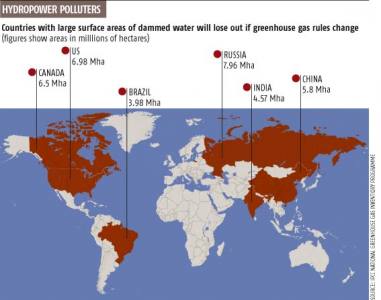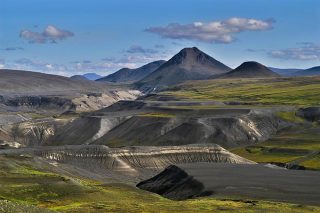Feb 26 2005
Hydroelectric Power’s Dirty Secret Revealed – New Scientist
Hydroelectric dams produce significant amounts of CO2 and methane – some produce more greenhouse gases than fossil fuel power plants.
Duncan Graham-Rowe, New Scientist, 26-2-2005, issue 2488
Contrary to popular belief, hydroelectric power can seriously damage the climate. Proposed changes to the way countries’ climate budgets are calculated aim to take greenhouse gas emissions from hydropower reservoirs into account, but some experts worry that they will not go far enough.
The green image of hydro power as a benign alternative to fossil fuels is false, says Éric Duchemin, a consultant for the Intergovernmental Panel on Climate Change (IPCC). “Everyone thinks hydro is very clean, but this is not the case,” he says.
Hydroelectric dams produce significant amounts of carbon dioxide and methane, and in some cases produce more of these greenhouse gases than power plants running on fossil fuels. Carbon emissions vary from dam to dam, says Philip Fearnside from Brazil’s National Institute for Research in the Amazon in Manaus. “But we do know that there are enough emissions to worry about.”
“Reservoirs convert carbon dioxide in the atmosphere into methane, which has 21 times the warming effect” Read More

